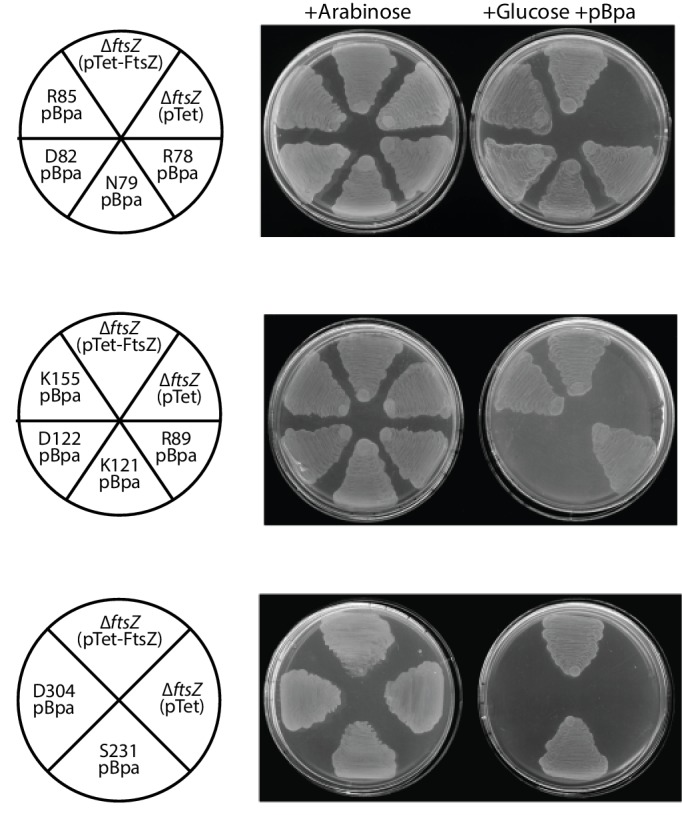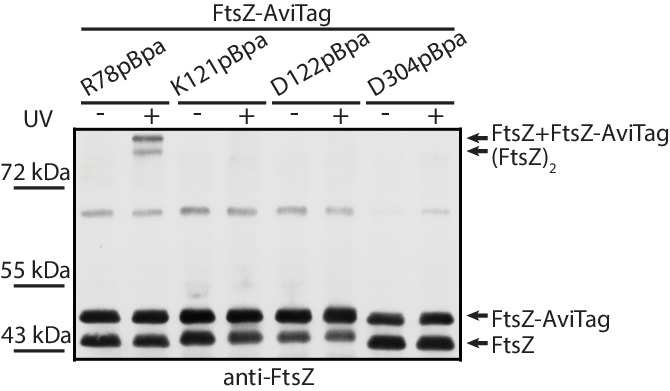Figure 4. Complementation characterization of EcFtsZ mutants at inter-protofilament lateral interfaces.
Ten EcFtsZ mutants were selected based on our crystallographic observations. Mutations were introduced by altering hydrophilic residues to hydrophobic leucine. The division phenotype was characterized using a ΔftsZ strain expressing the EcFtsZ mutants, with conditional expression of wild-type FtsZ from a plasmid at 30°C but not 42°C. ‘Rep’ and ‘Ind’ indicate repression and induction media, respectively. For each mutant, the complementation assay was repeated three times.
Figure 4—figure supplement 1. Complementation characterization of pBpa-incorporated EcFtsZ variants.

Figure 4—figure supplement 2. Immunoblotting analysis of three pBpa variants of EcFtsZ that failed to complement the ftsZ conditional-null strain shows absence of crosslinked dimers.


